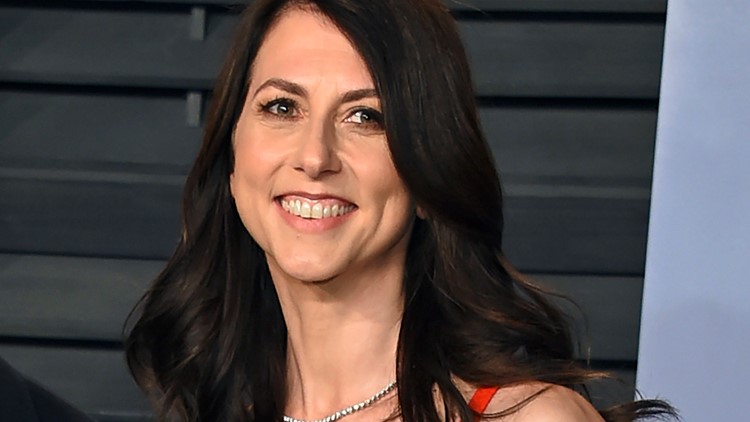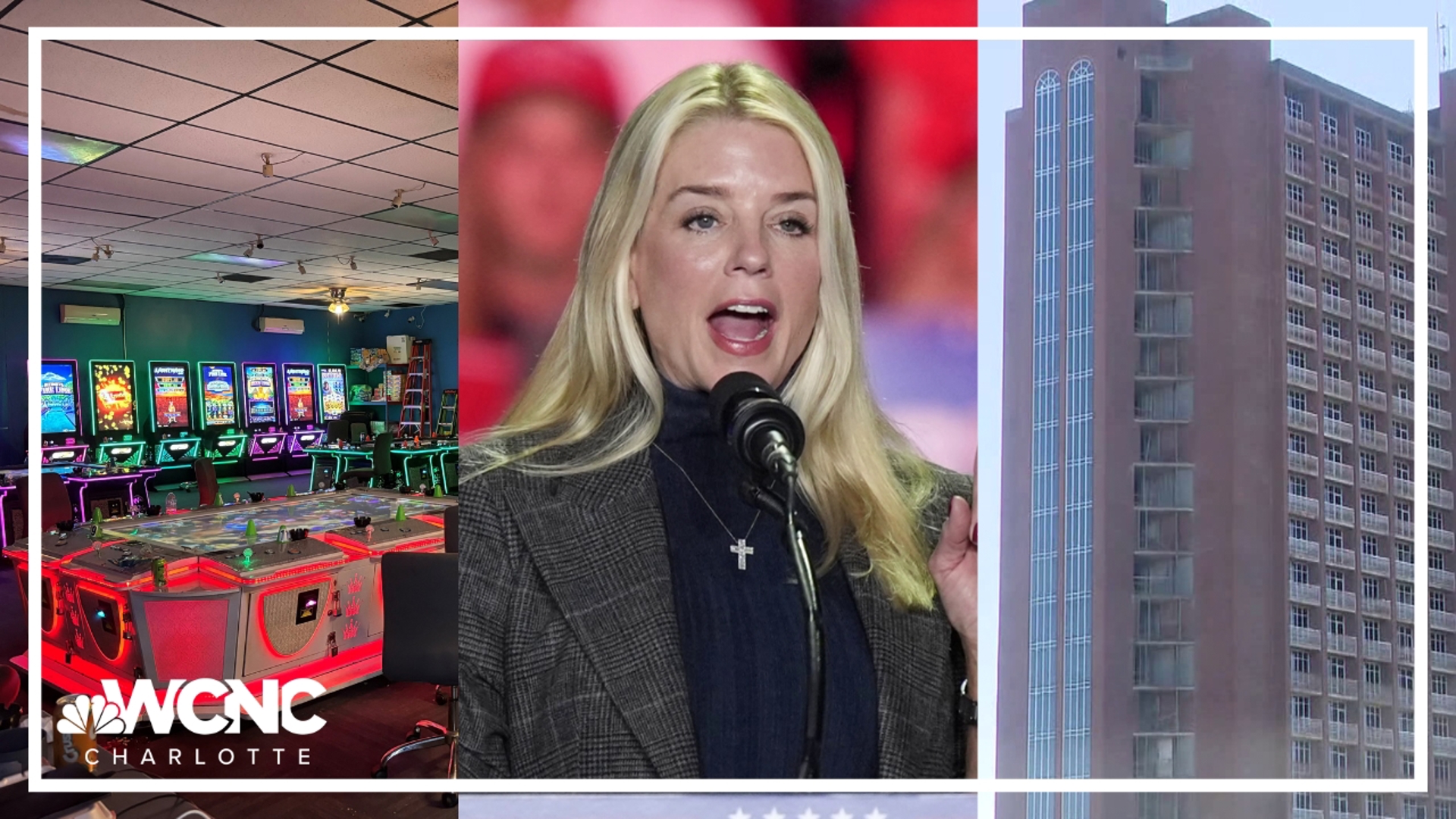Editor's Note: The video above is from June 2021.
Shock.
That’s what Ruth Simmons, the president of a historically Black university in Texas, felt in December when she received a call informing her that the school would be gifted $50 million — many times the size of the previous largest contribution it has received. Simmons, who leads Prairie View A&M University, thought she misheard the caller, so she asked for the amount to be repeated: “Five-Zero.”
The donor this time was MacKenzie Scott, who has reset the philanthropic agenda for racial equity while barely saying a word. Similar stories of surprise have flooded in from across the country in the past year as colleges and nonprofits received unexpected gifts from Scott and her husband, Dan Jewett.
Scott, a 51-year-old novelist, received the bulk of her fortune from her 2019 divorce from Amazon founder Jeff Bezos. After the police killing of George Floyd, she funded the top recipients of racial equity donations in 27 states, according to an AP analysis of preliminary data from the philanthropy research organization Candid. The data, which includes only contributions from institutional funders, shows that Scott was responsible for $567 million distributed to such organizations. (Two organizations declined to say how much they received from the philanthropist.)
In at least 11 states, Scott provided the majority of racial equity-oriented contributions to the top recipients. She was the sole major donor to these groups in 10 other states, with donations for education dominating her giving.
Scott’s impact in some states could be larger still, because it remains unclear how all of the $8.7 billion she has donated since 2020 has been distributed to individual organizations. The impact of the donations per state is also difficult to analyze because some of them, like those given to schools and national organizations, may have broader benefits.
“There’s no question in my mind that anyone’s personal wealth is the product of a collective effort, and of social structures which present opportunities to some people, and obstacles to countless others,” Scott wrote in a July 2020 post announcing $1.7 billion in contributions. She said her funding decisions were “driven by a deep belief in the value different backgrounds bring to problem-solving on any issue.”
Scott, later joined by Jewett, backed those words with hundreds of millions of dollars in donations to HBCU powerhouses like Morehouse College and Hispanic-Serving Institutions, to little-known groups like Yee Ha’ ólníi Doo’s Navajo & Hopi Families COVID-19 Relief Fund and to chapters of international groups like United Way.
Many organizations say Scott’s gifts were the largest they’ve ever received.
After Scott's split with Bezos, she pledged to give most of her wealth away, echoing the vows of other mega-donors like Bill Gates and Warren Buffett. Since then, her donations have flowed into the hands of organizations focused on racial equity, COVID relief and other issues. Because of the extraordinary growth in the value of Amazon stock, Scott's wealth is even larger today — about $60 billion, according to Forbes — than it was when she started giving her money away.
That means Scott's ability to influence philanthropy will continue for the foreseeable future. Her intention, she has said, is to keep giving “until the safe is empty.” And because her gifts come with no strings attached and allow organizations to set their own priorities, it's been a welcome change for many who feel hamstrung by donor pet projects.
“The most cherished gifts are definitely those that are unrestricted because a complex university has a wide variety of needs,” said Simmons, who notes those gifts allow universities to deal with their “meat-and-potatoes” issues.
When Prairie View A&M received Scott’s $50 million gift last fall, it created a $10 million scholarship fund for students most vulnerable to dropping out because of a job loss or some other financial stress brought on by the COVID-19 pandemic. So far, Simmons said, the school has given more than $5 million in scholarships from that fund, with the rest set to be awarded by the middle of next year.
“It helped immensely in terms of addressing the pressing needs of students who could not meet their financial obligations,” said Simmons, adding that many Prairie View A&M students work to supplement their financial aid.
A large chunk of Scott's donation — $35 million — was put in the school’s endowment, which now stands at $143 million.
“This is just a stark contrast to what we’ve seen, particularly in recent decades, as donors have asserted themselves not only through the gifts, but also (by) wanting to be on boards or being able to get as close to the things that they’re funding as possible,” said Tyrone Freeman, a professor at Indiana University’s Lilly Family School of Philanthropy. (The AP and the Lilly School receive funding from the Lilly Endowment.)
Yet Scott's donations have also prompted some calls for greater transparency. As an individual, she isn't subject to the same disclosure requirements that apply to mega-donors who contribute through charitable foundations. Nor do her announcements reveal how much she gives to individual groups. That means the amounts that these organizations receive are known only if they announce it themselves. Many have not.
“By providing such sizable donations to nonprofit organizations, Scott took on the role as a leading benefactor of the U.S. nonprofit sector,” said Maribel Morey, executive director of the Miami Institute for the Social Sciences. “Asking for greater transparency is just giving more agency to the public, so they know how and why decisions are being made about the public good.”
A spokesperson for The Bridgespan Group, the philanthropic consultancy firm that advises Scott on her donations, told the AP that the company doesn’t comment on its clients but encourages unrestricted donations.
Some of Scott’s racial equity contributions intersected with COVID-19 relief because the effects of the pandemic were disproportionately felt in minority communities. Around the same time that Prairie View A&M received millions, Ethel Branch, a former attorney general of the Navajo Nation who started a COVID relief fund for Native American Navajo and Hopi families in the early days of the pandemic, received a call informing her that $10 million was coming her way.
“It was at a time when we had pretty much exhausted all of our GoFundMe dollars,” said Branch, who leads the Utah-based Navajo & Hopi Families COVID-19 Relief Fund. “I couldn’t even go on social media because there were too many people posting about losing family members. And it was just a really dark time.”
The group, and its 1,300 volunteers, used the funding to provide water, personal protective equipment and food to Navajo and Hopi families in Arizona, Utah and New Mexico, Branch said. All told, they reached over half a million people.
But nearly a year since Scott's gift, Branch says the relief fund's resources are dwindling — a result, perhaps, of pandemic donor fatigue and an assumption that the group might no longer need money because of Scott's gift.
By contrast, Prairie View A&M has had more contributions from other donors after Scott's donation. At universities, big donors commonly have buildings or centers named after them. Yet there isn't going to be a Scott Center at Prairie View. She didn’t want that, Simmons said.
So the HBCU head came up with a “little secret” and established a writing program named after Toni Morrison, the Nobel Prize-winning Black novelist who taught Scott during her college days at Princeton University and who hired her as a research assistant on the 1992 novel “Jazz.”
“That’s as far as we could go in demonstrating our gratitude for her generosity,” Simmons said.
___
AP Business Writer Glenn Gamboa contributed to this report.
___
The Associated Press receives support from the Lilly Endowment for coverage of philanthropy and nonprofits. The AP is solely responsible for all content. For all of AP’s philanthropy coverage, visit https://apnews.com/hub/philanthropy.



